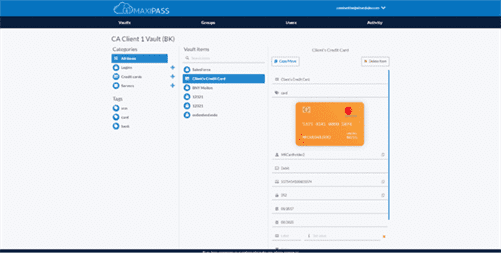Typically, data is ingested and stored as is in the data lake to accelerate ingestion and reduce time needed for preparation before data can be explored. The data lake enables analysis of diverse datasets using diverse methods, including big data processing and ML. Native integration between a data lake and data warehouse also reduces storage costs by allowing you to offload a large quantity of colder historical data from warehouse storage. Organizations can gain deeper and richer insights when they bring together all their relevant data of all structures and types and from all sources to analyze. To get the best insights from all of their data, these organizations need to move data between their data lakes and these purpose-built stores easily.
Your organization has spent a lot of money on the legacy system, so you definitely need a strong business case to ditch it. However, no matter which path you’ll take, it is useful to recognize common pitfalls and make the most of the technology that is already here. This will help enable use of other advanced technologies and help transforming them into data-driven companies. For initiatives like artificial intelligence and machine learning to succeed, data must be presented as an immutable entity that can be used for experimentation. With data lakes, it is crucial to separate the data into different zones and maintain a refined zone after transformation. Then, in the refined zone, companies can enforce schema and allow the schema to evolve to ensure the data is ready for machine learning and data science needs.
Schema
Due to the curation and cleaning work required, it is usually slower to set up compared to a data lake. Data lakes excel in collecting large volumes of heterogeneous data for generating fresh data patterns and insights, primarily leveraged by data scientists. You know the data types that need to be stored in advance, and companies are uncomfortable with duplicate or additional data. We can understand it as a process of transforming raw data into information because data is first processed and then organized into sections.
- You don’t need a Data Lakehouse; you can do everything that a lakehouse does in the Modern Data Lake.
- Yet there is still a need to create data warehouses for analytics use by business users.
- The local unemployment rate had been 4.2 percent in 2019, higher than the national average of 3.5 percent.
- Without proper management, data lakes can become a dumping ground for all data, making it difficult to find and use the most relevant data.
- Analysis of Clickstream Data – as the data collected from the web can be integrated into it, some of the data could be stored in the warehouse for daily reported while others for analysis.
Other unstructured data is data that has other sources, such as IoT data, image, video and analog-based data. We use data stored in a data warehouse or data lake for analytics and reporting purposes. Their most significant disadvantage is that they can be challenging to manage and govern.
What are the Differences and how they are build up on each other
Expansions have been proposed since Buffalo Metro Rail’s inception in the 1980s, with the latest plan reaching the town of Amherst. Buffalo Niagara International Airport in Cheektowaga has daily scheduled flights by domestic, charter and regional carriers. Power award in 2018 for customer satisfaction at a mid-sized airport, and underwent a $50 million expansion in 2020–21. The airport, light rail, small-boat harbor and buses are monitored by the NFTA’s transit police. Eighteen radio stations are licensed in Buffalo, including an FM station at Buffalo State College. Over ninety FM and AM radio signals can be received throughout the city.

Its goal is make business information readily available to facilitate better decision making. A warehouse brings together data from many systems and is built with a data schema optimized for slicing and dicing the business data in interesting ways. When done well, the warehouse will have excellent query performance and be able to handle significant load from reporting systems and ad hoc needs. Fault choice of data storage, and many enterprises still have massive data lakes supporting their analytical data workloads. Data warehouses have been used for many years in the healthcare industry, but their use has not been hugely successful.
Perficient’s Cloud Data Expertise
The critical ones that can impact your platform choice are listed below. Enroll in IBM’s Data Warehouse Engineering professional certificate to learn all about SQL statements and queries, how to design and populate data warehouses, and more. Much of the benefit of data lake insight lies in the ability to make predictions after the data is processed for predictive analytics, machine learning, and AI. In finance, as well as other business settings, a data warehouse is often the best storage model because it can be structured for access by the entire company rather than a data scientist.

Through MPP engines and fast attached storage, a modern cloud-native data warehouse provides low latency turnaround of complex SQL queries. The data storage layer of the Lake House Architecture is responsible for providing durable, scalable, and cost-effective components to store and manage vast quantities of data. In a Lake House Architecture, the data warehouse and data lake natively integrate to provide an integrated cost-effective storage layer that supports unstructured as well as highly structured and modeled data.
From data warehouses to data lakes.
The non-profit Buffalo Olmsted Park Conservancy was created in 2004 to help preserve the 850 acres of parkland. Olmsted’s work in Buffalo inspired similar efforts in cities such as San Francisco, Chicago, and Boston. Canalside, Buffalo’s historic business district and harbor, attracts more than 1.5 million visitors annually. It includes the Explore & More Children’s Museum, the Buffalo and Erie County Naval & Military Park, LECOM Harborcenter, and a number of shops and restaurants.

It can ingest and deliver batch as well as real-time streaming data into a data warehouse as well as data lake components of the Lake House storage layer. By building a data lakehouse, organizations can streamline their overall data management process data lake vs data warehouse with a unified data platform. A data lakehouse can take the place of individual solutions by breaking down the silo walls between multiple repositories. This integration creates a much more efficient end-to-end process over curated data sources.
More from M Haseeb Asif and Big Data Processing
A data warehouse is often the best storage model in the finance and banking industries, as it allows structured access by the entire organization rather than an individual data scientist. It plays a vital role in investment due to the significant amounts of money at stake. When it comes to money, a single point difference can result in devastating financial losses for millions of people. Data warehouses act as smart storage in such cases by storing only relevant data to make precise forecasts.
Suppose the organization’s goal is to understand its business patterns and analytics or to launch something new based on its previous customer insights. Regardless of structure or source, all data finds a home in the data lake, necessitating substantial storage capacity. https://www.globalcloudteam.com/ The versatility of raw data allows quick analysis for various purposes, making it ideal for machine learning. However, data lakes can become swamps without proper quality and governance measures. This is why data lakehouses are an attractive option for many organizations.
Which data storage is suitable for transactional data?
Although the city’s summers are drier and sunnier than other cities in the northeastern United States, its vegetation receives enough precipitation to remain hydrated. Buffalo summers are characterized by abundant sunshine, with moderate humidity and temperatures; the city benefits from cool, southwestern Lake Erie summer breezes which temper warmer temperatures. Temperatures rise above 90 °F (32.2 °C) an average of three times a year. No official recording of 100 °F (37.8 °C) or more has occurred to date, with a maximum temperature of 99 °F (37 °C) reached on August 27, 1948. Rainfall is moderate, typically falling at night, and cooler lake temperatures hinder storm development in July.


